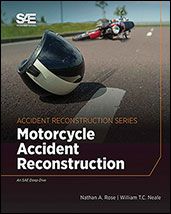Technical Paper
Visualization of Driver and Pedestrian Visibility in Virtual Reality Environments
2021-04-06
2021-01-0856
In 2016, Virtual Reality (VR) equipment entered the mainstream scientific, medical, and entertainment industries. It became both affordable and available to the public market in the form of some of the technologies earliest successful headset: the Oculus Rift™ and HTC Vive™. While new equipment continues to emerge, at the time these headsets came equipped with a 100° field of view screen that allows a viewer a seamless 360° environment to experience that is non-linear in the sense that the viewer can chose where they look and for how long. The fundamental differences, however, between the conventional form of visualizations like computer animations and graphics and VR are subtle. A VR environment can be understood as a series of two-dimensional images, stitched together to be a seamless single 360° image. In this respect, it is only the number of images the viewer sees at one time that separates a conventional visualization from a VR experience.


